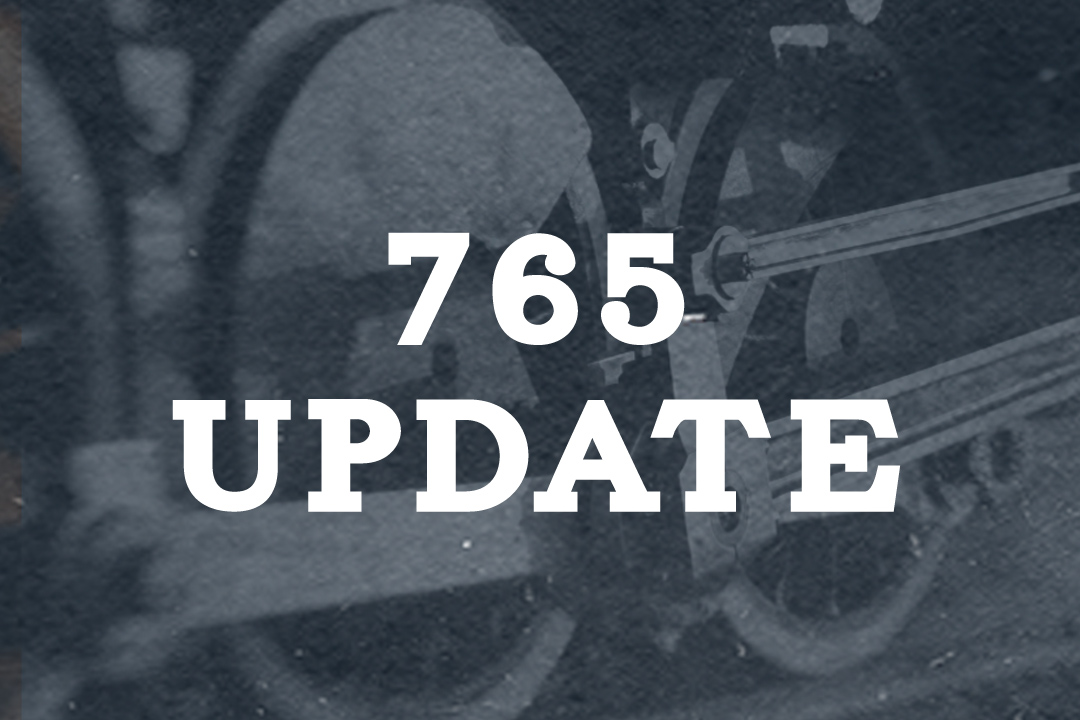Submitted by Steve Winicker.
LAST WEEKENDS SHOP ACTIVITY
Cross members and swash plate installation was started in the auxiliary tank. Some painting of the interior has been accomplished as of the end of the day on Wednesday. The sand is gone from the tank as of Thursday, but Bob is making a mess of cut off steel and grinding dust while installing swash plates so things don’t look as good as they could mid-week but should improve this weekend. Zach finished off installing the transfer hose connection for the rear of the auxiliary car. Zach also ground out some of the staybolt seal welds that need attention in the 765 firebox. George removed the valve oil lubricator from the engine and it is ready for cleaning. Carl started sweeping up the debris from the first two swash plates Bob installed. Tyler and George worked on wire bushing slag from the installed swash plates. Bob has two swash plates completed and one that still needs some welding. There are at least two more to install before we get to the wall of our storage area. Progress is being made but much more is left to do.
UPCOMING ACTIVITIES
I am going to try and get some paint on the interior of the auxiliary tank over the next couple weeks any highly qualified painters are welcome to assist. Zach has a airless sprayer on hand that should be able to apply the coal tar epoxy we hope to use. We also have some swash plates we can cut out and bolt in. some grinding and other work that is needed. Cleaning up the lubricators provides another activity for anyone interested.
SAFETY SENSE
Not all ladder incidents are due to defective ladders however that can certainly be one of the factors. It is important that ladders are inspected regularly and used properly. OSHA requires it in several instances, a couple being as follows…
- OSHA 1910.25(d)(1)(x) – Ladders shall be inspected frequently and those which have developed defects shall be withdrawn from service for repair or destruction and tagged or marked as “Dangerous, Do Not Use.”
- OSHA 1910.26(c)(2)(vi) – Ladders are to be inspected (c)(2)(vi)(a) If ladders tip over or, (c)(2)(vi)(d) If ladders are exposed to oil and grease
- OSHA 1910.27(f) – Fixed Ladders – All ladders shall be maintained in a safe condition. All ladders shall be inspected regularly, with the intervals between inspections being determined by use and exposure.
There are also other rules for the safe use of all ladders:
- Ladders must be maintained free of oil, grease and other slipping hazards.
- Do not load ladders beyond their manufacturer’s rated capacity. Remember that the load on the ladder is the sum of the worker’s weight plus the weight of any load being carried by the worker.
- Do not carry objects or loads that could cause loss of balance and falling.
- Use at least one hand to grasp the ladder when climbing. Remember and always apply the ‘Three Point Rule’.
- Use ladders only for their designed purpose.
- Use ladders only on stable and level surfaces unless secured to prevent accidental movement.
- Do not use ladders on slippery surfaces unless secured or provided with slip-resistant feet to prevent accidental movement. Do not use slip resistant feet as a substitute for exercising care when placing, lashing or holding a ladder upon slippery surfaces.
- Use a barricade to keep traffic or activity away from the ladder.
- Keep areas clear around the top and bottom of ladders. o not move, shift or extend ladders while in use.
- Use ladders equipped with non-conductive side rails if the worker or the ladder could contact exposed energized electrical equipment.
- Face the ladder when moving up or down.
Although ladders are part of our everyday life at both work and home, it’s important we don’t take them for granted. Ensure you inspect and utilize ladders appropriately.


